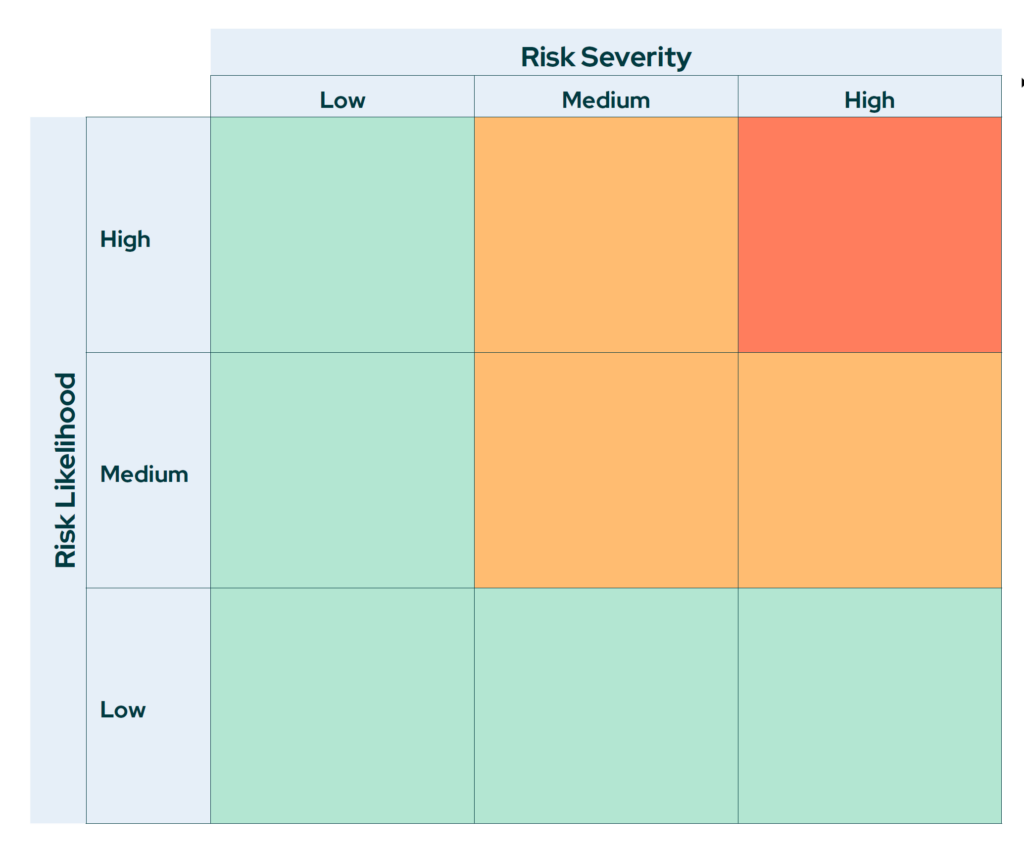Your business, workforce, and operations are unique—and so are your risks. The process you use to determine the most important risks to address first doesn’t have to be. Lean on a tried and true practice to assessing risks in your facility.
Here’s a basic outline for uncovering and addressing hazards in the workplace:
Plan: Nail Down the Details
Spending a good amount of time planning helps ensure your assessment goes flawlessly. Here are some important points to decide on before you jump in.
What’s the scope and size of your risk assessment?
What kinds of risks will you be looking for:
- safety hazards
- noncompliance issues
- inefficiencies
- all of the above?
What will you be evaluating:
- the entire workplace
- one department or location
- a machine
- a group of employees
Who’s on your risk assessment team?
Which members of your organization will participate in the assessment?
Who will be in charge of:
- documenting information
- reporting findings to leadership
- following up on risk mitigation
What supplies, equipment, and other resources will the team need?
Should you bring in a safety consultant to lead or help coordinate the process?
Identify: Build Your List of Risks
You’ve set the scope on who and what. Now you’re ready to jump in and start identifying risks. OSHA recommends the following these steps to start identifying risks:
- Collect existing information about workplace hazards.
- Inspect the workplace for safety hazards.
- Identify health hazards.
- Conduct incident investigations.
- Identify hazards associated with emergency and non-routine situations.
Be thorough in risk identification.
Don’t rely exclusively on what the team has seen or heard. There are lots of other useful sources of information about risks, like
- equipment operating manuals
- material safety data sheets
- results of inspections and audits
- details of previous incidents
- federal and state workplace safety regulations
- other safety documents and collections of workforce data
An experienced risk management expert (like the ones here at KPA) can manage the process, interview workers, and use advanced analytics tools to make sure no hazards are overlooked.
Evaluate: Which risks are most important to tackle first?
Here’s where the “assessment” part of risk assessment kicks into gear. Your job at this point is to make an actionable inventory of your findings—to untangle the most severe hazards and time-sensitive issues from the rest.
Score your risks based on these questions
For each risk you’ve identified, ask yourself these questions:
- What are the consequences?
How serious is the risk? Could it result in death or permanent, life-altering injuries for your workers? What would the financial impact look like for your organization? - How likely is it?
What are the chances of the risk occurring and affecting your workforce? Is it related to a core aspect of your organization or something your workers deal with frequently—e.g. an everyday machine, tool, or process?
Risk assessment professionals often use these two questions to assign scores to various issues and hazards and place risks on a risk matrix, a table that measures the consequences of risks against the likelihood of risks. The most severe and most likely risks are the most dangerous.
Risk matrices vary in terms of detail, but usually include at least 3 columns and 3 rows, typically color-coded to indicate severity. Here’s an example:
Download an editable version of the Risk Assessment Matrix
Plan Next Steps
Ok, all the planning, prepping, and scoring has gotten you to a nice ranked list of risks for you to tackle. What next?
Let the hierarchy of controls guide your next steps.
The hierarchy of controls is an approach to safety that structures protective measures into stages, in order of most to least effective. Think of each stage as a line of defense. Want to learn more? Here’s a deep dive to get you up to speed.
You don’t need to manage your workforce risks alone.
Tap into KPA’s combination of consulting expertise, award-winning training, and EHS and compliance software to minimize incidents and bring your business to the next level.
See how KPA can help you reduce the hassle of compliance, save time and money, and protect your business. Request a demo.


